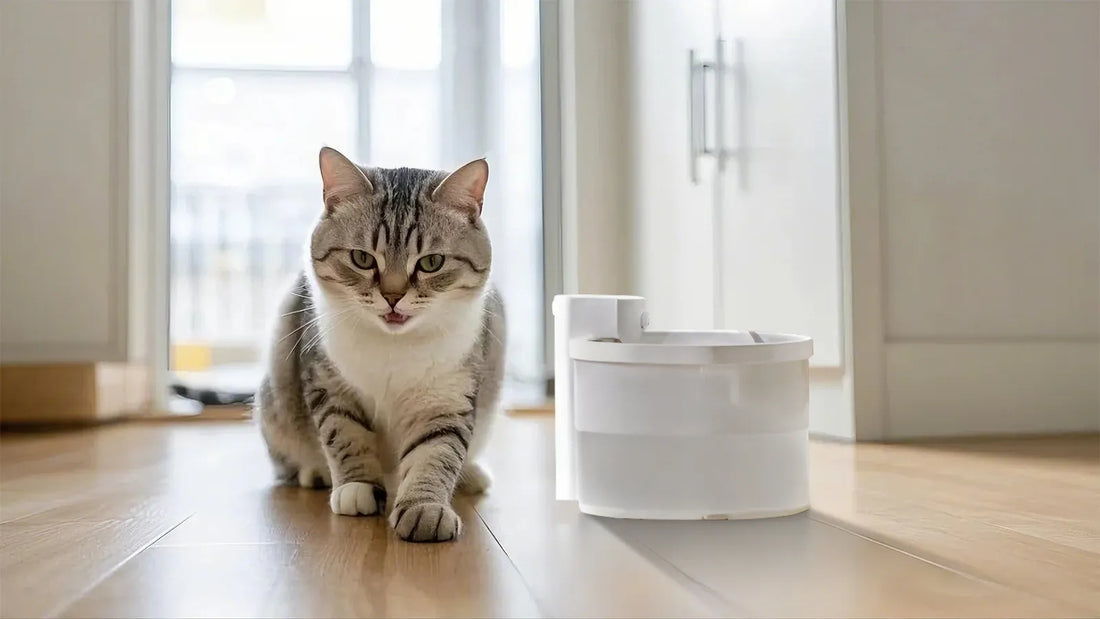Mealtime can be a chaotic experience for many dog owners, especially those with large breeds. If your furry friend gulps down food in seconds, you might be familiar with the mess, the choking hazards, and the digestive issues that follow. Enter the slow feeder dog bowl for large dogs—a simple yet revolutionary tool designed to make mealtime safer, healthier, and more enjoyable for your pet. But what exactly makes this bowl a must-have for every dog owner? Let’s dive in and explore the world of slow feeder bowls and how they can benefit your large dog.
Why Do Large Dogs Need Slow Feeder Bowls?
Large dogs are notorious for their voracious appetites. Their size and energy levels often lead them to eat quickly, which can cause a range of problems. Rapid eating can lead to choking, gagging, and even a life-threatening condition called bloat. Slow feeder bowls are specifically designed to address these issues by slowing down your dog’s eating pace. The unique ridges, mazes, and patterns in these bowls force your dog to work around obstacles to access their food, turning mealtime into a mentally stimulating activity.
Benefits of Using a Slow Feeder Bowl
The advantages of using a slow feeder dog bowl for large dogs extend beyond just slowing down eating. Here are some key benefits:
- Improved Digestion: Eating too quickly can lead to indigestion, vomiting, and gas. A slow feeder bowl encourages your dog to chew their food properly, aiding in better digestion.
- Weight Management: By slowing down the eating process, these bowls help your dog feel fuller for longer, reducing the risk of overeating and obesity.
- Mental Stimulation: The intricate designs of slow feeder bowls engage your dog’s brain, providing a fun and challenging activity that can reduce boredom and anxiety.
- Reduced Risk of Bloat: Bloat is a serious condition that can affect large dogs. Slowing down eating can significantly lower the risk of this potentially fatal issue.
Types of Slow Feeder Bowls
Not all slow feeder bowls are created equal. Depending on your dog’s needs and preferences, you can choose from various types:
- Maze Design: These bowls feature intricate patterns that require your dog to navigate around obstacles to access their food.
- Raised Ridges: Bowls with raised ridges create barriers that slow down eating without being too challenging.
- Adjustable Portions: Some bowls allow you to adjust the difficulty level by changing the placement of the obstacles.
- Non-Slip Base: For energetic eaters, a non-slip base ensures the bowl stays in place during mealtime.
How to Choose the Right Slow Feeder Bowl for Your Large Dog
Selecting the perfect slow feeder bowl for your large dog involves considering several factors:
- Size: Ensure the bowl is large enough to accommodate your dog’s portion size without being too cumbersome.
- Material: Look for durable, non-toxic materials that are easy to clean and safe for your dog.
- Design: Choose a design that matches your dog’s eating habits and skill level. Some dogs may need a more challenging bowl, while others do better with simpler designs.
- Ease of Cleaning: Opt for bowls that are dishwasher-safe or easy to clean by hand to maintain hygiene.
Tips for Introducing a Slow Feeder Bowl
Transitioning your dog to a slow feeder bowl may take some time and patience. Here are a few tips to make the process smoother:
- Start Slow: Begin by mixing the slow feeder bowl with their regular bowl to help them get used to the new design.
- Use Treats: Encourage your dog to explore the bowl by placing treats in the crevices.
- Monitor Progress: Keep an eye on your dog during the initial uses to ensure they’re adapting well and not getting frustrated.
- Be Patient: Some dogs may take longer to adjust, so give them time to get comfortable with the new bowl.
Common Myths About Slow Feeder Bowls
Despite their growing popularity, there are still some misconceptions about slow feeder bowls. Let’s debunk a few:
- Myth 1: They’re Only for Overweight Dogs: While slow feeder bowls can aid in weight management, they’re beneficial for all dogs, regardless of their weight.
- Myth 2: They’re Too Complicated: Many slow feeder bowls are designed to be user-friendly and suitable for dogs of all skill levels.
- Myth 3: They’re Only for Large Breeds: Slow feeder bowls come in various sizes and designs, making them suitable for dogs of all breeds and sizes.
Real-Life Success Stories
Many dog owners have seen remarkable improvements in their pets’ eating habits and overall health after switching to a slow feeder bowl. From reducing mealtime anxiety to preventing digestive issues, the positive impact of these bowls is undeniable. One owner shared how their large breed dog, who used to finish meals in under a minute, now takes 15-20 minutes to eat, leading to fewer digestive problems and a happier, healthier pet.
If you’re tired of the chaos and health risks associated with your large dog’s rapid eating, it’s time to consider a slow feeder dog bowl. Not only will it transform mealtime into a calmer, more enjoyable experience, but it will also contribute to your dog’s long-term health and well-being. Ready to make the switch? Your furry friend will thank you!













